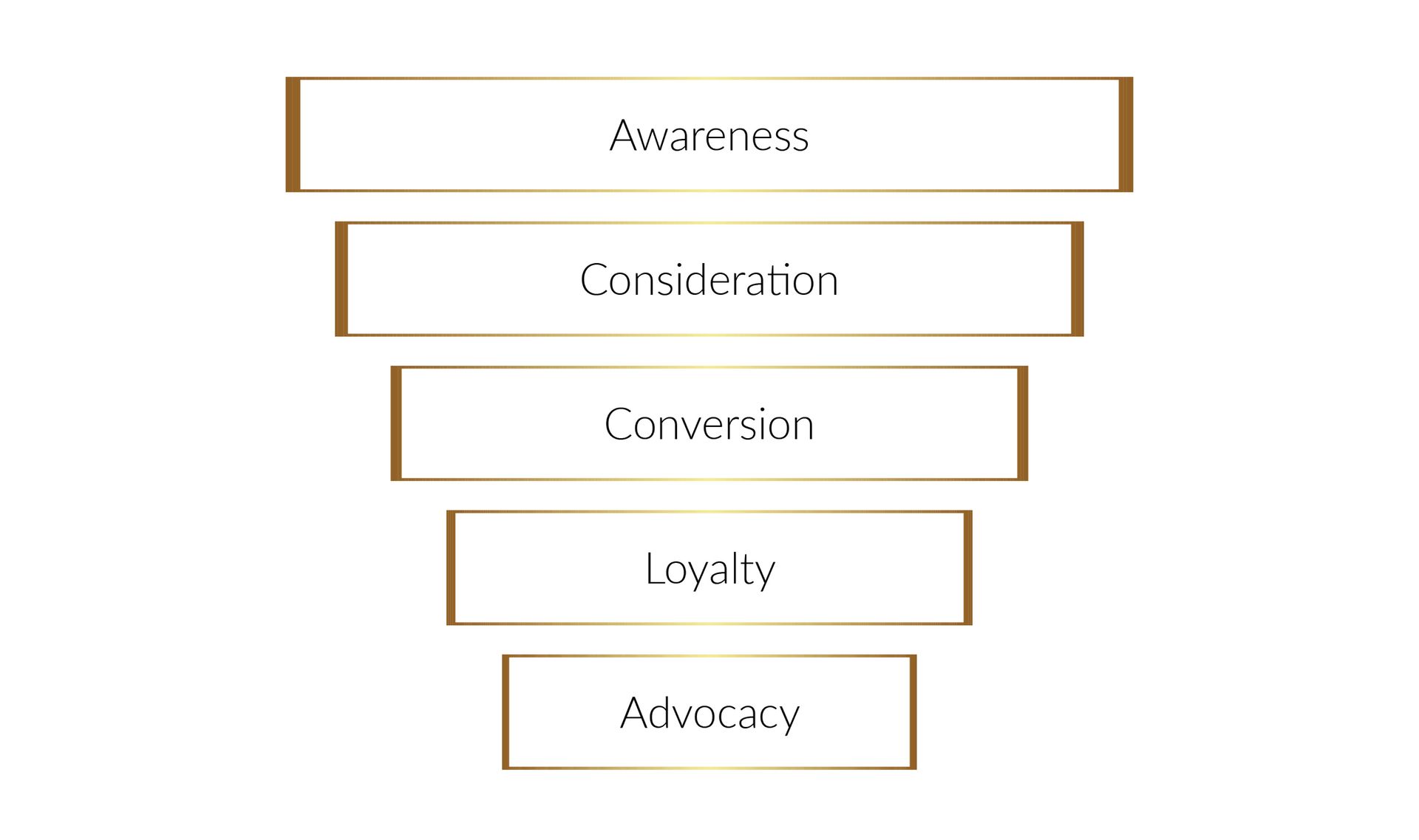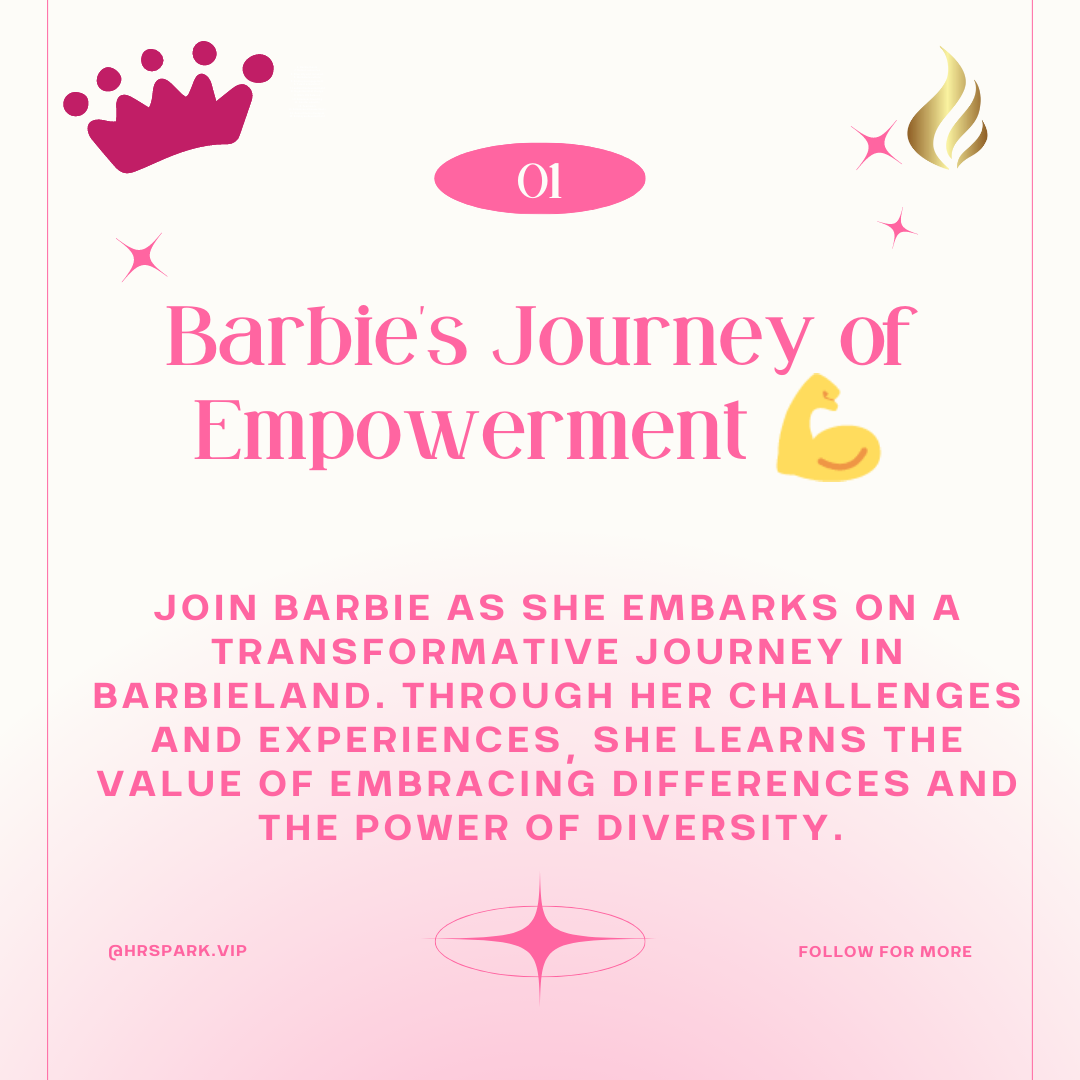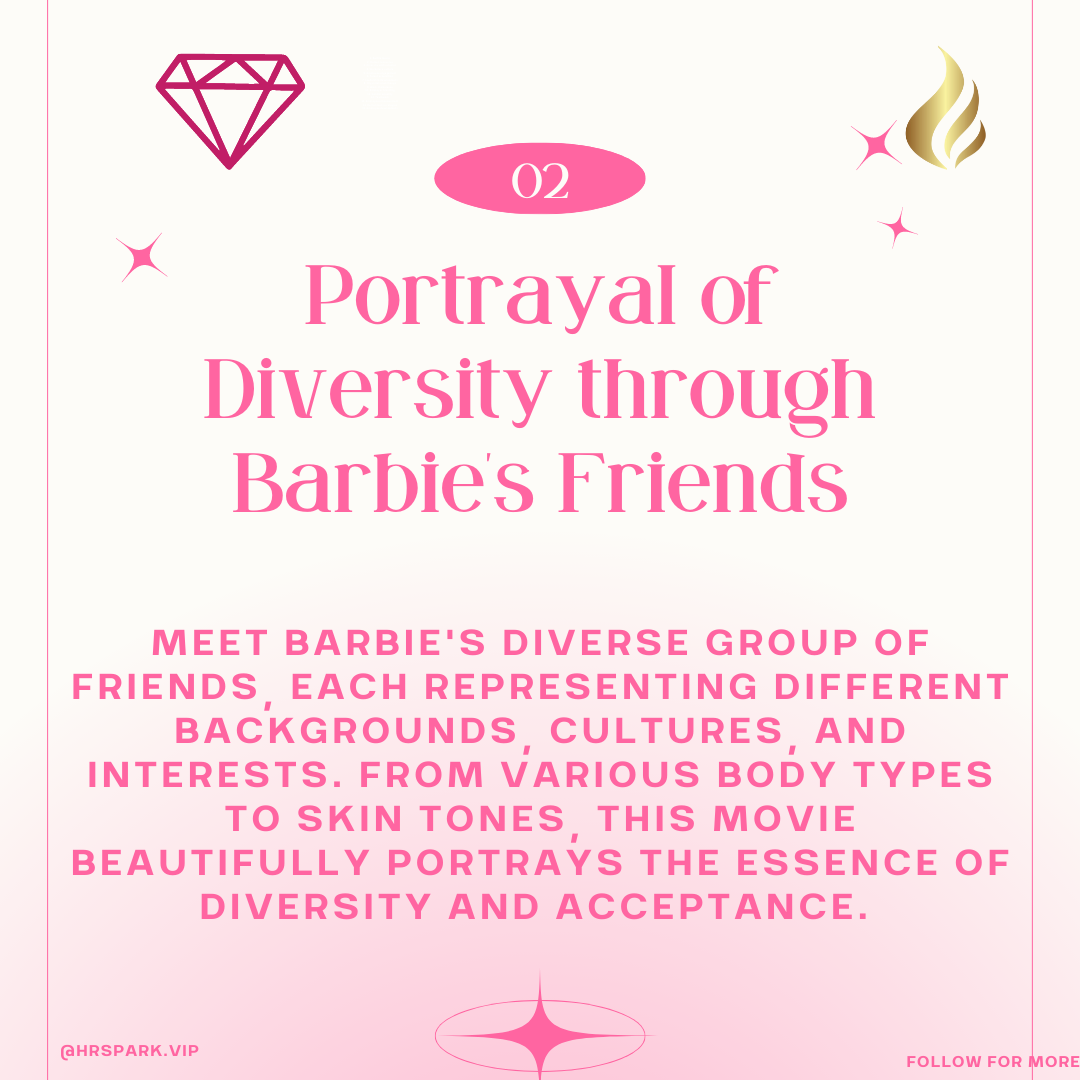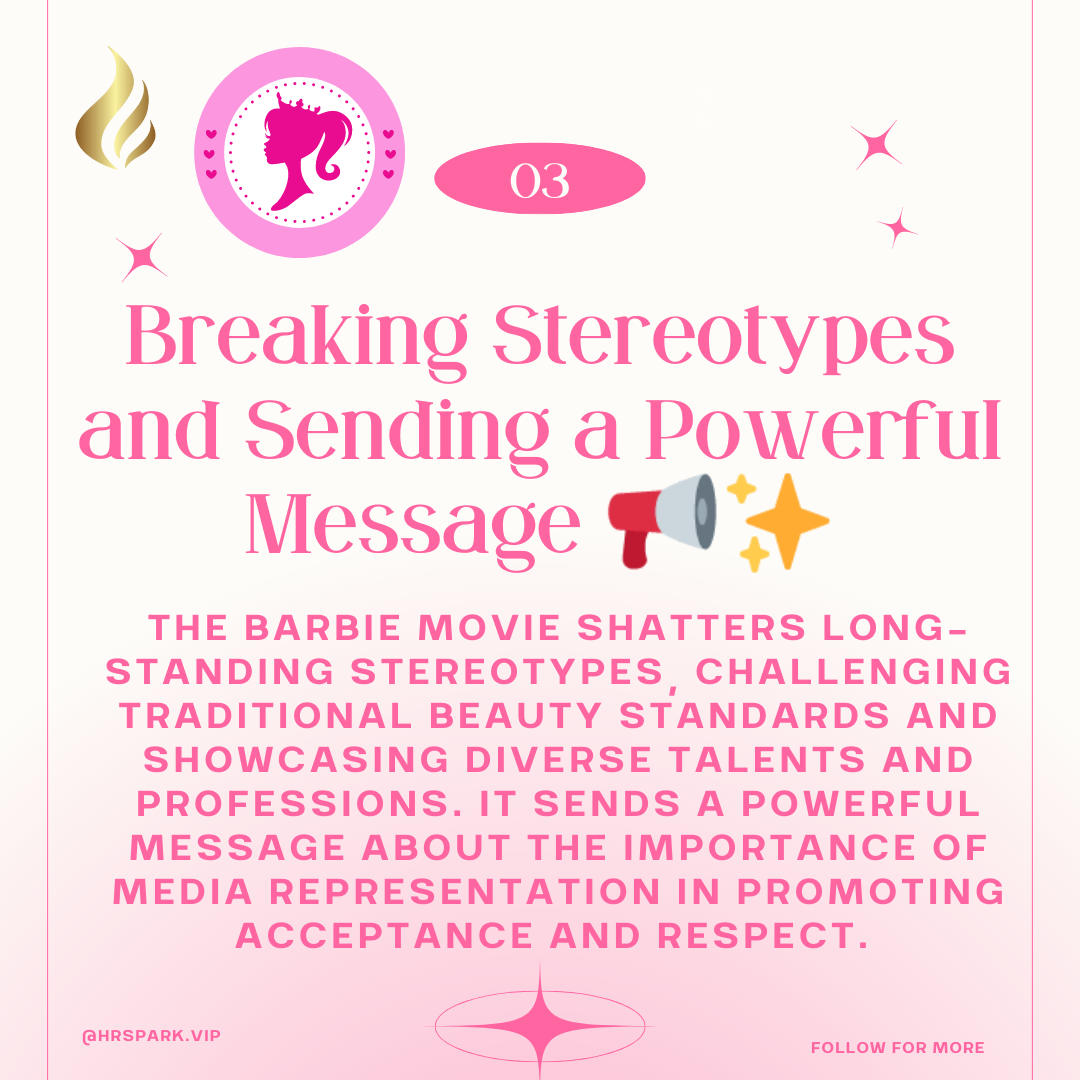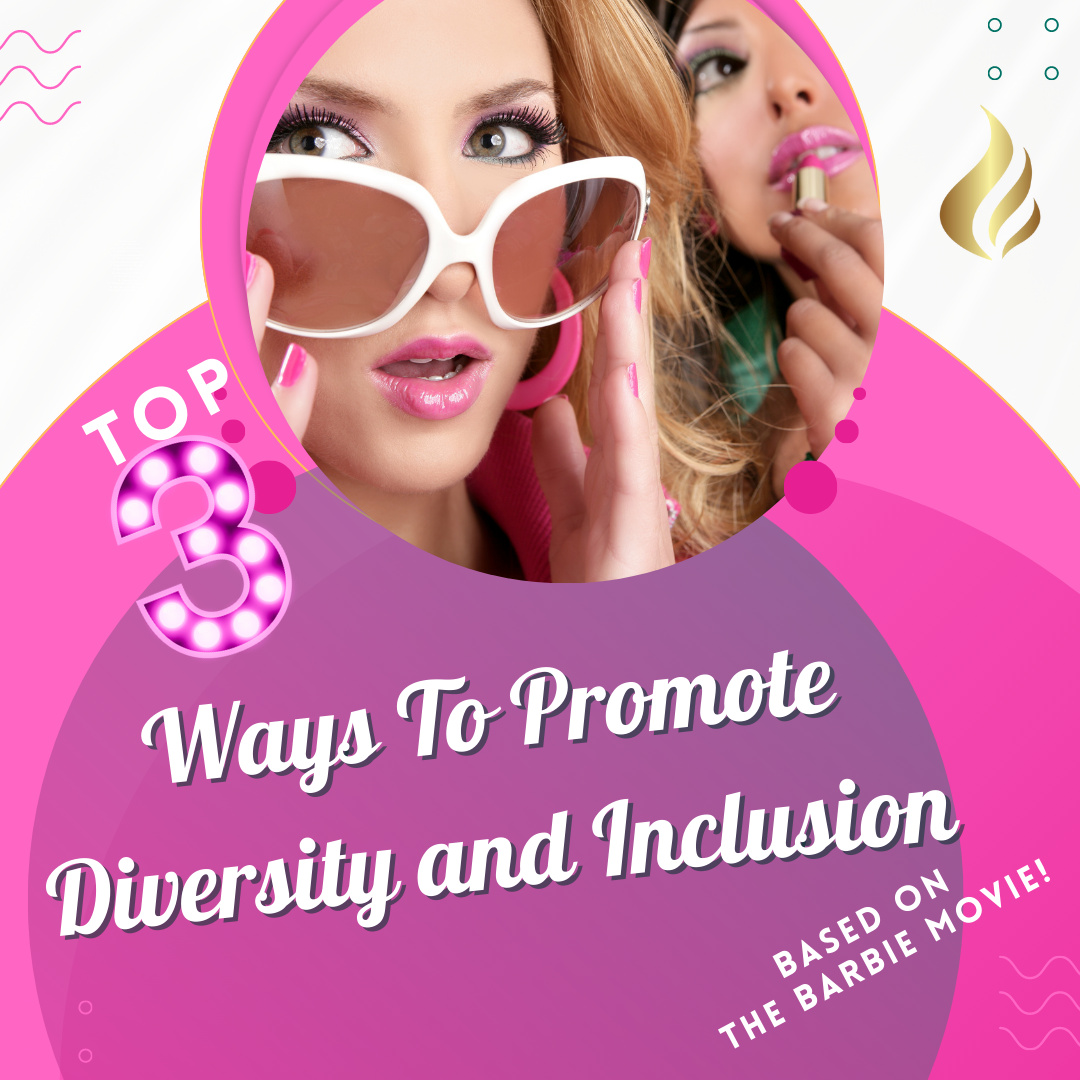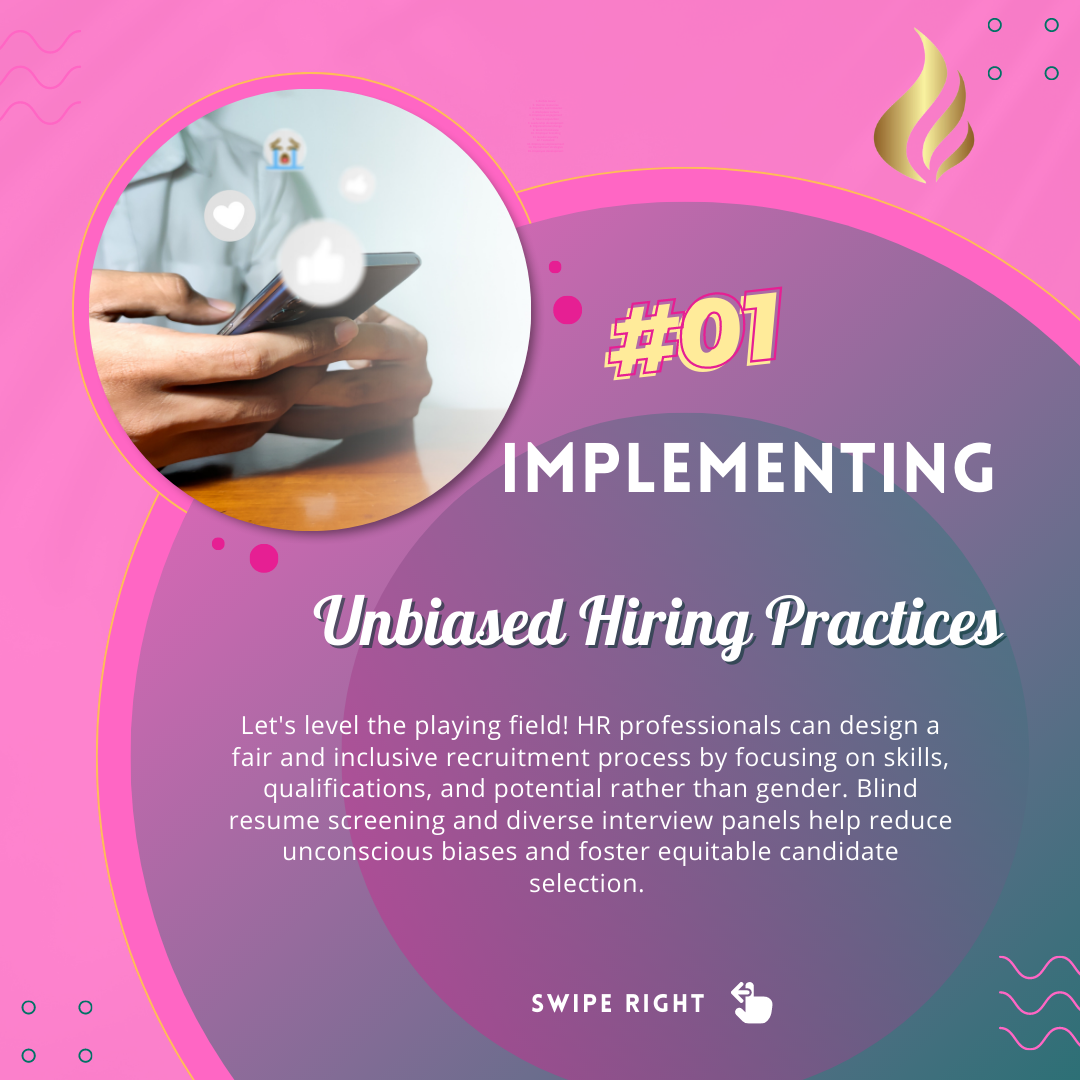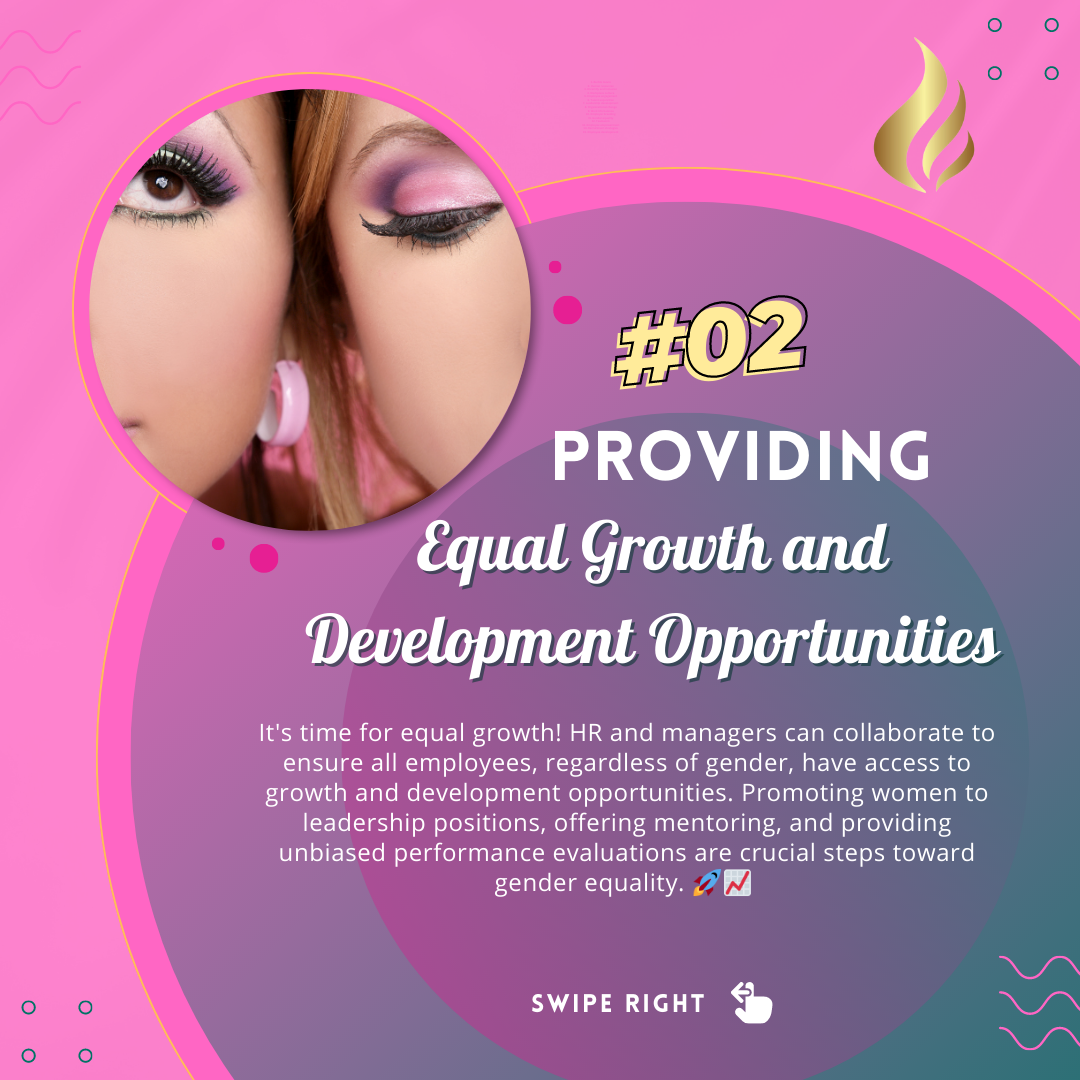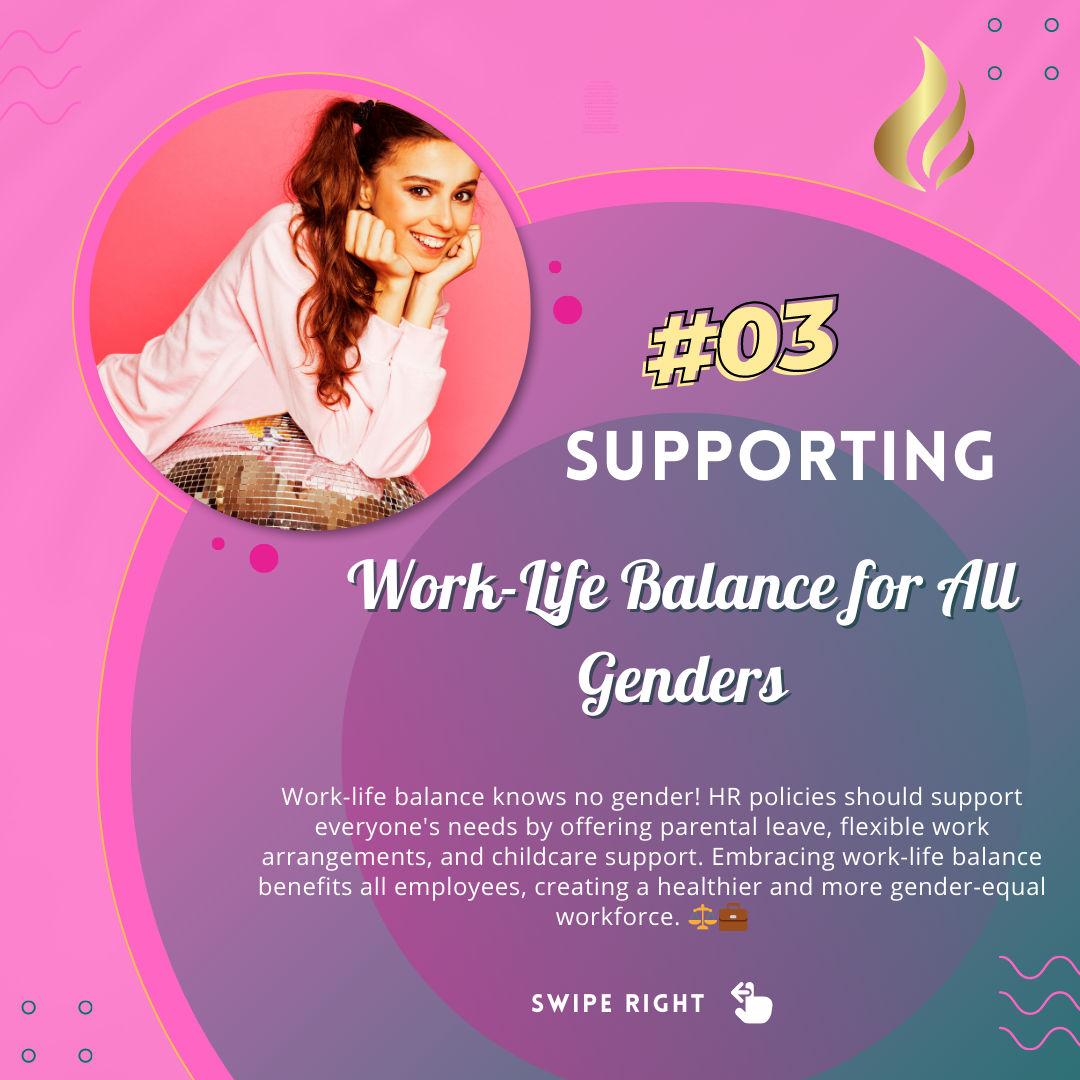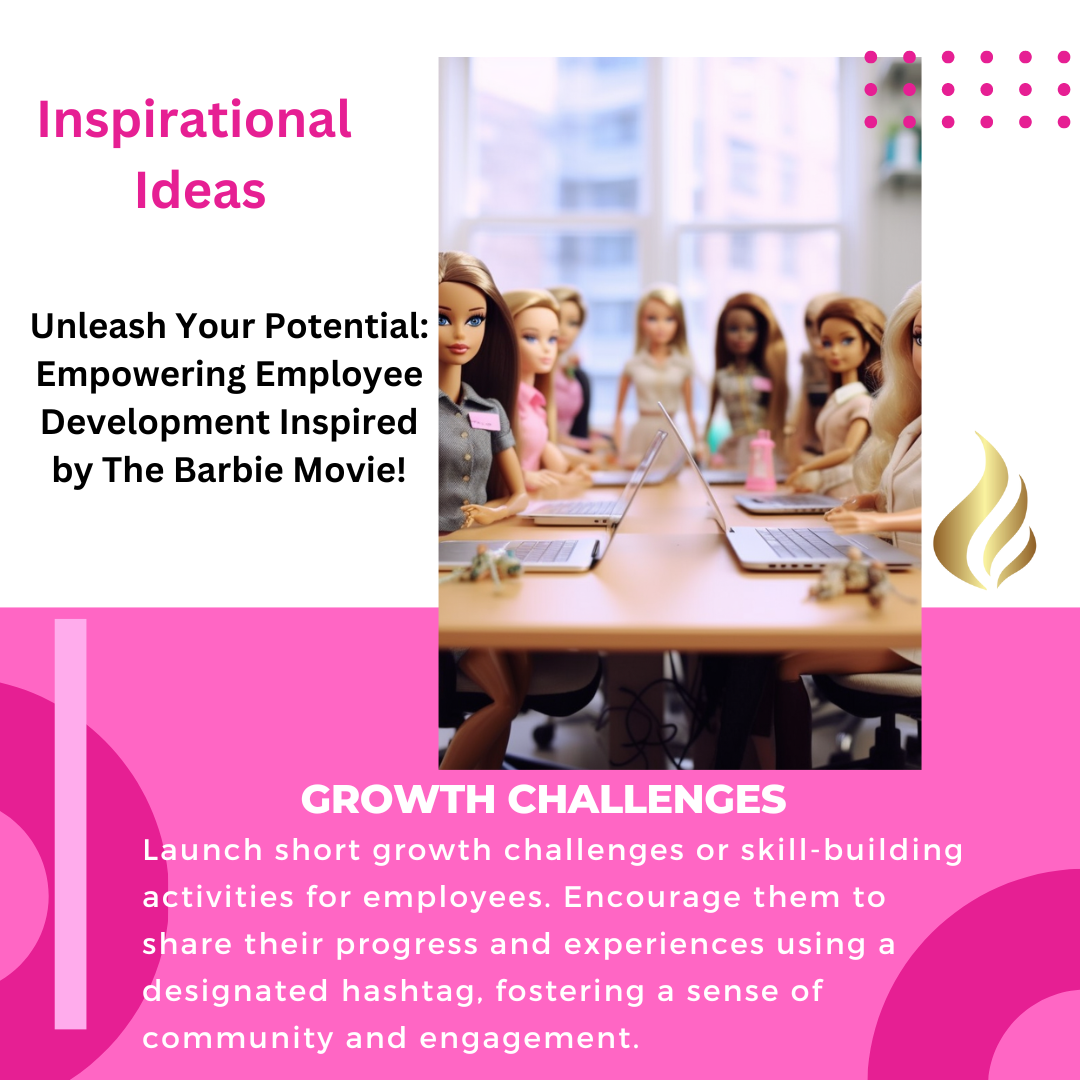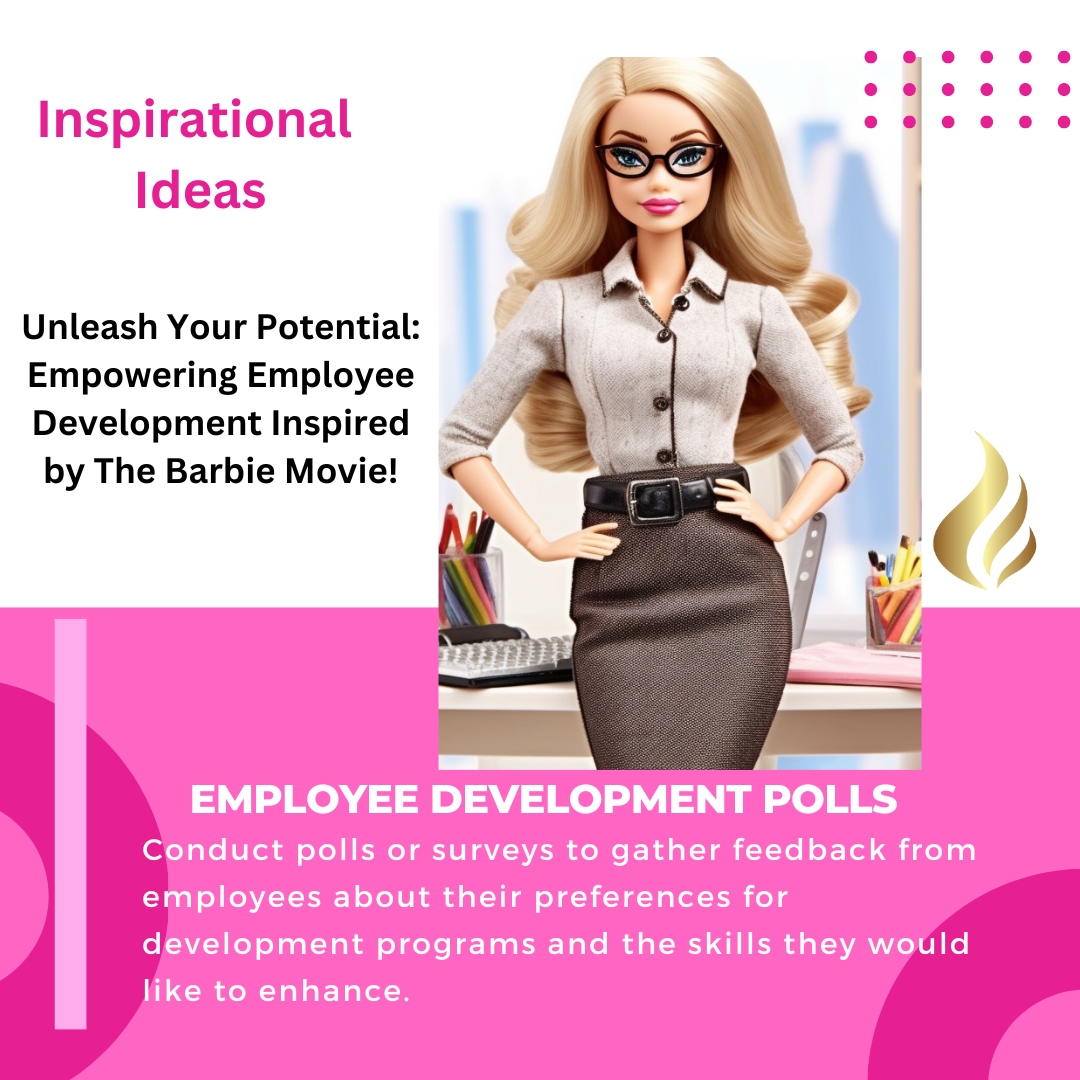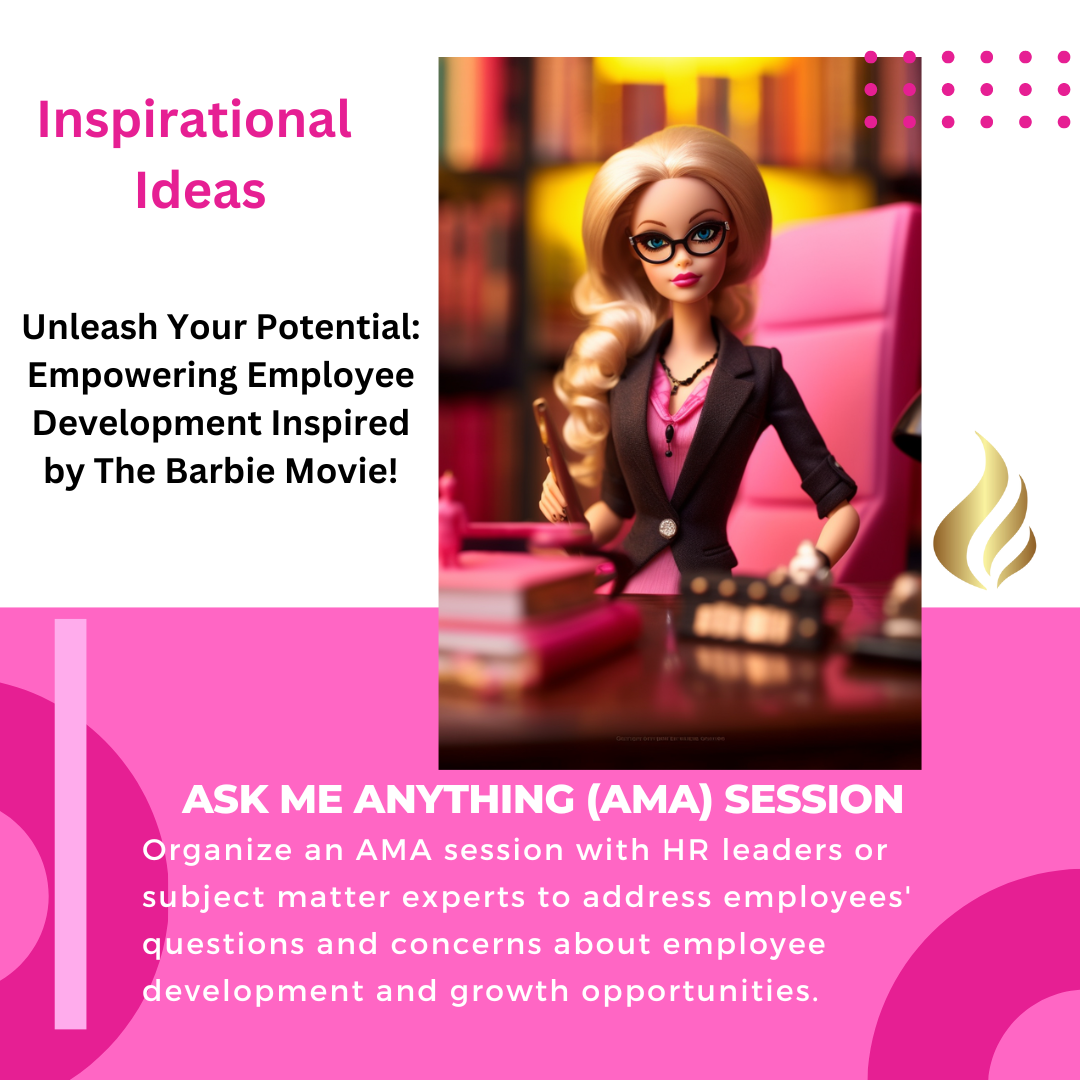Embracing Change and Diversity: Lessons from the New Barbie Movie
Empowering HR: Lessons from the New Barbie Movie for a Diverse and Inclusive Workplace
In today's rapidly evolving world, change and diversity have become pivotal aspects of our cultural fabric. The constant metamorphosis challenges societal norms, while embracing diversity fosters an environment of inclusivity and empowerment. These very themes are exemplified brilliantly in the groundbreaking new Barbie movie, a cinematic marvel that captivated audiences of all ages. As we explore the enthralling world of Barbieland and witness Barbie's enthralling journey of self-discovery, we uncover invaluable lessons that extend far beyond the silver screen.
In this blog, we will delve into the captivating realms of the new Barbie movie, examining its portrayal of change, diversity, and empowerment. Beyond mere entertainment, this film offers a treasure trove of insights relevant to the realm of human resources. Keywords such as diversity, inclusion, talent acquisition, employee development, change management, and employer branding will guide our exploration into the profound impact that these themes have on modern HR practices. According to "Hi, Barbie! Margot Robbie's 'Barbie' tops box office for second week with $93 million" by Jake Coyle with The Associated Press!
Join us on this enlightening expedition as we draw parallels between the diverse and dynamic world of Barbieland and the multifaceted challenges faced by human resources professionals in today's workplaces. Let us unravel the secrets of fostering an inclusive organizational culture, nurturing talent, and creating a workplace where all employees can thrive. As the iconic Barbie herself embodies the spirit of transformation and growth, we too shall embark on a transformative journey, equipping ourselves with the knowledge to embrace change and diversity, revolutionizing our workplaces into beacons of empowerment and success.The body content of your post goes here. To edit this text, click on it and delete this default text and start typing your own or paste your own from a different source.
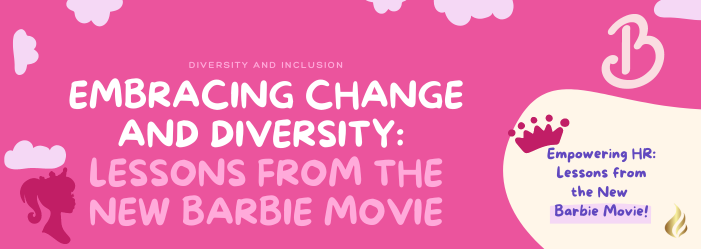
Diversity and Inclusion in Barbieland and the Workplace
A. Exploring the diverse cast and characters in the Barbie movie
The Barbie movie introduces audiences to a rich and diverse set of characters, each with their own unique backgrounds, interests, and personalities. Unlike the earlier portrayal of Barbie as a one-dimensional fashion doll, this movie breaks new ground by embracing diversity and representation.
Barbie's Journey: Embracing Differences
Throughout the movie, we witness Barbie's transformation from being seen merely as a fashionable icon to becoming a symbol of empowerment. As she navigates through various challenges in Barbieland, she learns the value of embracing differences and the strength that lies within diversity. This journey reflects the real-world struggles many individuals face in accepting and celebrating their uniqueness.
Portrayal of Diversity through Barbie's Friends
Barbie's friends in the movie come from diverse backgrounds, cultures, and professions. They are depicted with different body types, skin tones, and interests. This portrayal shatters long-standing stereotypes and sends a powerful message about the importance of representation in media and society. The inclusion of diverse characters helps young viewers see themselves in various roles and encourages acceptance and respect for others who are different from them.
B. The Importance Of Diversity And Inclusion In The Workplace
Embracing Diversity: A Catalyst for Innovation
In the workplace, just as in Barbieland, diversity serves as a catalyst for innovation and growth. When employees with diverse perspectives, experiences, and skill sets come together, they bring a multitude of ideas and solutions to the table. This diversity of thought fosters creativity and allows organizations to stay ahead of the curve in a competitive business landscape.
Fostering a Creative and Inclusive Work Environment
The Barbie movie emphasizes the importance of creating an inclusive environment where everyone's voice is heard and valued. Similarly, in a workplace that prioritizes diversity and inclusion, employees feel comfortable expressing their ideas and opinions. This open and respectful communication leads to better collaboration and problem-solving, ultimately benefiting the organization as a whole.
Overcoming Challenges and Building a Cohesive Team
In the movie, Barbie and her friends face numerous challenges that they can only overcome by working together. This cooperative spirit highlights the power of teamwork and collaboration. In the workplace, diverse teams may encounter challenges due to varying perspectives, but when managed effectively, these teams can achieve remarkable results. Encouraging employees to appreciate and leverage their differences fosters a strong sense of unity and a cohesive work culture.

C. Benefits Of Having A Diverse Workforce And Its Positive Impact On Company Culture
Enhanced Adaptability and Flexibility
A diverse workforce is better equipped to adapt to change and navigate through challenging times. Different backgrounds and experiences provide a broader range of insights, making the organization more agile in responding to market shifts and customer demands.
Fostering Innovation and Creativity
Studies have shown that diverse teams are more innovative. When individuals from various backgrounds collaborate, they bring unique perspectives that spark creativity and lead to groundbreaking ideas and products. Embracing diversity, therefore, propels the organization's capacity for innovation and helps it stay ahead in a rapidly evolving business landscape.
Strengthening Company Reputation and Employer Branding
Companies that prioritize diversity and inclusion tend to attract top talent from various demographics. An inclusive company culture demonstrates a commitment to social responsibility and creates a positive reputation, not only among potential employees but also among customers and partners. Such positive employer branding can lead to a competitive advantage in attracting and retaining the best talent in the industry.
By drawing parallels between the diverse world of Barbieland and the real-world workplace, we can glean valuable insights into the significance of diversity, inclusion, and their profound impact on company culture and success. The Barbie movie serves as a reminder of the positive changes that embracing diversity can bring, both in fictional worlds and in our everyday lives.
Challenging Gender Stereotypes: Lessons for Gender Equality
Barbie Challenges Traditional Gender Roles In The Movie
The Barbie movie boldly challenges traditional gender roles and stereotypes that have long been associated with the character and the broader cultural perception of the Barbie brand. In this new portrayal, Barbie is no longer confined to the limited role of a fashion doll but instead becomes a powerful agent of change.
Redefining Success and Ambition
The movie portrays Barbie as a determined and ambitious character who aspires to be more than what society expects of her. She challenges the notion that success is solely defined by beauty and appearance and showcases that intelligence, leadership, and determination are equally valuable attributes. This sends a powerful message to young viewers, encouraging them to pursue their passions and aspirations regardless of societal expectations based on gender.
Breaking the Mold of Stereotypical Roles
Barbie's friends in the movie also play critical roles that defy traditional stereotypes. They demonstrate that women can be scientists, athletes, tech-savvy, and leaders. By showing a diverse range of professions and skills among female characters, the movie dismantles the idea that certain careers are gender-specific. It encourages young audiences to explore their interests and talents without being limited by outdated norms.
Efforts in HR in Addressing Gender Bias And Promoting Gender Equality
Promoting Diversity and Inclusion Initiatives
Just as the Barbie movie challenges gender stereotypes, human resources (HR) departments play a crucial role in dismantling gender bias within organizations. HR professionals can design and implement diversity and inclusion initiatives that create an environment where employees of all genders feel valued and have equal opportunities to thrive.
Implementing Unbiased Hiring Practices
HR teams can strive to create a fair and inclusive recruitment process that focuses on skills, qualifications, and potential rather than gender. By employing blind resume screening and diverse interview panels, companies can reduce unconscious biases and ensure a more equitable selection of candidates.
Providing Equal Growth and Development Opportunities
HR can work with managers to ensure that all employees have equal access to growth and development opportunities. This includes promoting women to leadership positions, offering mentoring and sponsorship programs, and providing training to mitigate the impact of gender stereotypes on performance evaluations.
Supporting Work-Life Balance for All Genders
HR policies should support work-life balance for all employees, acknowledging that family responsibilities are not limited to one gender. Offering parental leave, flexible work arrangements, and childcare support benefits everyone, promoting a healthier work environment and a more gender-equal workforce.
Real-World Examples Of Companies Fostering An Inclusive Environment For All Genders
Accenture's Gender-Neutral Parental Leave Policy
Accenture, a global professional services company, introduced a gender-neutral parental leave policy that allows all employees, regardless of gender, to take the same amount of parental leave when they become parents. This policy helps break down traditional gender roles and promotes equal responsibilities for childcare.
Salesforce's Equal Pay Initiative
Salesforce, a leading cloud-based software company, implemented an equal pay initiative to address gender pay gaps within the organization. The company regularly reviews its pay practices to ensure that employees are compensated fairly, irrespective of their gender, race, or ethnicity.
Unilever's Diversity and Inclusion Strategy
Unilever, a consumer goods company, has a robust diversity and inclusion strategy that includes targets for gender representation at all levels of the organization. The company actively works to increase the number of women in leadership positions and create an inclusive culture where everyone's voice is heard.
These real-world examples demonstrate how companies can take proactive steps to challenge gender stereotypes, address bias, and create a more inclusive workplace where individuals of all genders can thrive and contribute to the organization's success. The Barbie movie's message of empowerment and breaking free from limiting gender roles serves as a reminder of the transformative impact such efforts can have on the workplace and society as a whole.
Talent Acquisition and Recruitment: Finding the Right Fit
The Challenges Faced During The Casting Process For The Barbie Movie
The casting process for the Barbie movie presented several unique challenges, particularly in finding the right actors to portray diverse and empowering characters. As the movie aimed to break away from traditional Barbie stereotypes, the filmmakers sought individuals who not only possessed acting talent but also embodied the essence of the characters they would portray. Some of the challenges encountered were:
Embodying Empowering Characters: The movie's characters represented diverse professions and roles, each with their unique strengths and personalities. Finding actors who could authentically embody these empowering qualities and challenge gender norms required an extensive casting search.
Ensuring Diversity and Inclusion: The casting team aimed to promote diversity and inclusion within the movie, reflecting the real-world diversity of the audience. This required actively seeking actors from different backgrounds, races, and ethnicities to create a cast that resonated with a global audience.
Navigating Stereotypes: To avoid falling into the trap of perpetuating stereotypes, the casting team had to carefully navigate the fine line between character traits and clichéd portrayals, ensuring that the characters felt authentic and empowering.
Adapting Recruitment Strategies To Find The Right Talent
The Barbie movie's casting process offers valuable insights for HR professionals in reimagining their recruitment strategies to attract the right talent for their organizations. By taking inspiration from the movie's approach, HR departments can create a more effective and inclusive recruitment process.
Emphasizing Beyond Skillset: Like the casting team, HR should look beyond technical skills and qualifications during the recruitment process. While skills are essential, finding candidates who align with the company's values and can contribute to a positive and empowering company culture is equally vital.
Prioritizing Diversity: Just as diversity was a priority for the Barbie movie, HR should actively prioritize diversity and inclusion when seeking new hires. Diverse teams bring fresh perspectives, innovative ideas, and better decision-making, ultimately leading to improved company performance.
Leveraging Innovative Platforms: The casting team for the Barbie movie utilized various platforms and networks to discover new talent. HR professionals should also explore innovative recruitment platforms, social media, and professional networks to reach a broader and more diverse pool of candidates.
Showcasing Company Culture: In the movie casting process, actors were sought not only for their individual abilities but also for their potential to contribute positively to the project as a whole. Similarly, HR should highlight the company's culture and values during recruitment to attract candidates who resonate with the organization's mission.
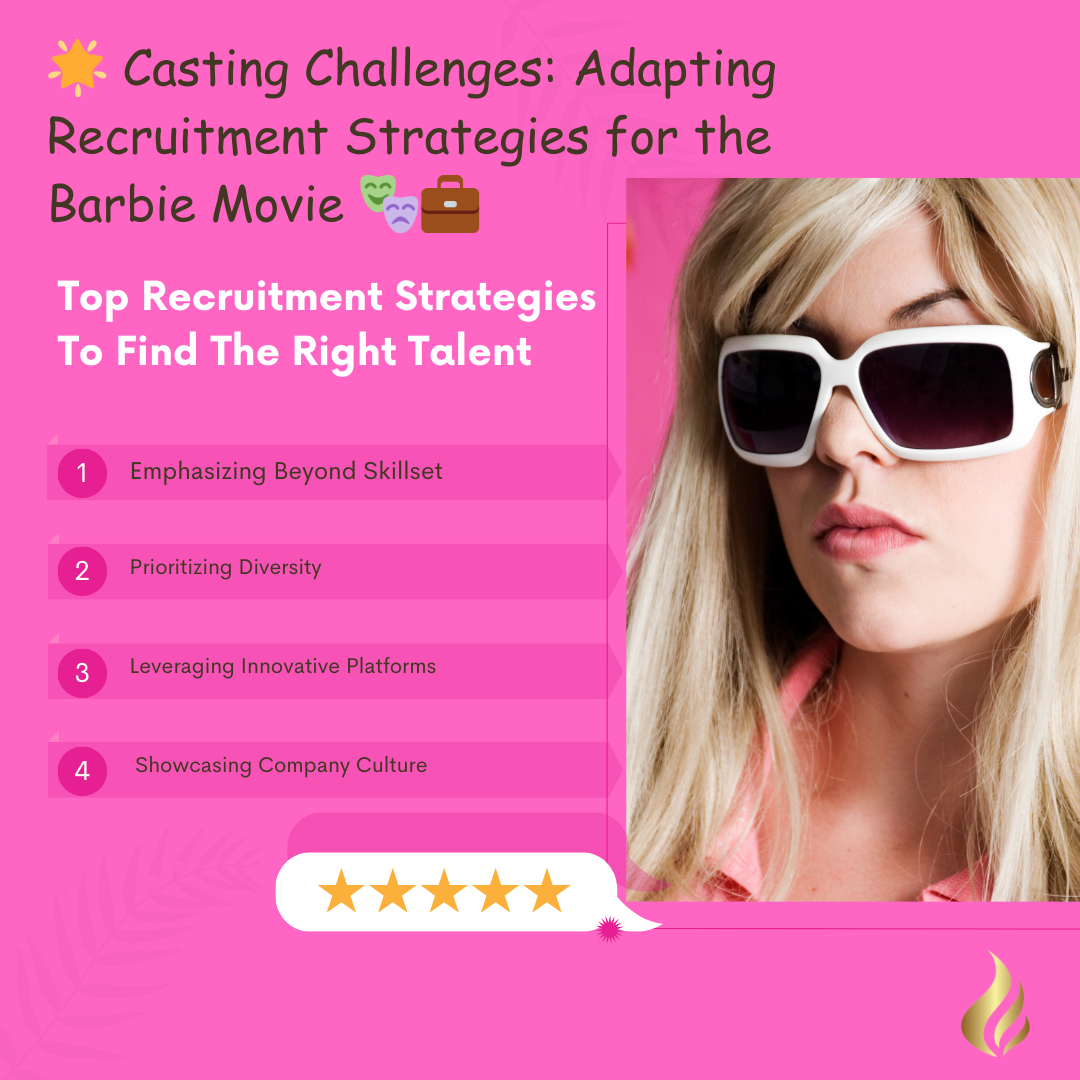
Tips for HR Professionals To Attract Diverse And Qualified Candidates
Craft Inclusive Job Descriptions: Use gender-neutral language and avoid biased terms in job descriptions. Clearly communicate the company's commitment to diversity and inclusion in the workplace.
Establish Diversity Partnerships: Collaborate with organizations that promote diversity and support underrepresented groups to access a more diverse talent pool.
Implement Blind Recruitment: Consider implementing blind recruitment practices to remove bias from the initial selection process, such as conducting blind resume reviews or skill-based assessments.
Conduct Unconscious Bias Training: Provide training to HR staff and hiring managers to recognize and mitigate unconscious biases that may affect the selection process.
Showcase Diversity in Marketing Materials: Feature diverse employees in marketing and recruitment materials to demonstrate the company's commitment to diversity and inclusion.
Engage in Campus and Community Outreach: Connect with diverse communities through career fairs, workshops, and networking events to build relationships with potential candidates.
Offer Employee Referral Programs: Encourage employees to refer qualified candidates from diverse backgrounds and incentivize successful referrals.
By adapting their recruitment strategies to prioritize diversity, inclusion, and empowerment, HR professionals can attract top talent that aligns with the company's values and contributes to a more innovative and successful organization. The Barbie movie's casting process serves as a reminder of the transformative power of intentional and inclusive recruitment efforts.
Empowering Employee Development and Growth
In the Barbie movie, the character embarks on a journey of self-discovery and personal growth. Initially, Barbie finds herself conforming to societal expectations and struggling to break free from traditional gender roles. However, as the story unfolds, she discovers her true passions, talents, and ambitions. Through determination and perseverance, Barbie challenges the status quo and embraces her uniqueness, ultimately becoming a source of inspiration for others.
Barbie's journey reflects the experiences of many employees in the workplace. Often, individuals may start their careers unsure of their full potential or feel confined by societal norms and workplace expectations. However, with the right support and opportunities for growth, employees can discover their true potential and achieve remarkable personal and professional development.
The Importance of Employee Development and Continuous Learning
Employee development and continuous learning are essential components of a thriving and progressive workplace. HR plays a vital role in fostering an environment that encourages employees to learn, grow, and reach their full potential. Some reasons why employee development is crucial include:
1. Skill Enhancement: Continuous learning allows employees to acquire new skills and knowledge, enabling them to adapt to evolving industry trends and stay competitive in the market.
2. Improved Performance: When employees have access to development opportunities, they are more likely to perform at their best, leading to increased productivity and efficiency.
3. Employee Engagement: Providing development opportunities shows employees that the company is invested in their growth and well-being. This, in turn, boosts employee morale and engagement.
4. Talent Retention: Employees are more likely to stay with an organization that invests in their development, reducing turnover and associated costs.
5. Innovation and Creativity: Learning and growth inspire employees to think innovatively and contribute fresh ideas, fostering a culture of creativity within the organization.
6. Leadership Development: Nurturing employee growth prepares them for leadership roles within the company, ensuring a pipeline of competent and capable leaders.
HR Strategies To Promote Employee Development And Growth
Personalized Development Plans: HR can work with employees to create personalized development plans based on their individual strengths, interests, and career aspirations.
Training and Workshops: Organize training sessions, workshops, and seminars on various topics, from technical skills to soft skills like communication and leadership.
Mentorship Programs: Implement mentorship programs that pair experienced employees with newer ones to provide guidance, support, and knowledge sharing.
Tuition Reimbursement: Offer tuition reimbursement or financial support for employees pursuing further education or relevant certifications.
Internal Mobility Opportunities: Encourage internal job postings and transfers to allow employees to explore different roles and departments within the organization.
Online Learning Platforms: Provide access to online learning platforms where employees can access a wide range of courses and educational resources.
Performance Feedback and Coaching: Regularly provide constructive feedback and coaching to help employees identify areas for improvement and growth.
Recognition and Rewards: Recognize and reward employees who actively participate in development programs and showcase exemplary growth.
Supportive Company Culture: Foster a company culture that values learning, curiosity, and continuous improvement, where employees feel encouraged to take on new challenges.
The Barbie movie not only entertains its audience but also offers valuable insights for HR professionals on building an inclusive and empowering workplace. By promoting diversity, challenging gender stereotypes, and supporting employee development, HR can create a dynamic environment where employees thrive, grow, and contribute meaningfully to the organization's success. Just as Barbie embarks on her journey of self-discovery and empowerment, employees, too, can unleash their full potential in an environment that values their uniqueness and encourages continuous growth.
Navigating Change: Organizational Culture and Change Management
Barbieland experiences significant changes in the movie
In the Barbie movie, Barbieland undergoes significant changes that parallel the transformations often faced by real-world organizations. At the beginning of the story, Barbieland is portrayed as a place with rigid expectations and predetermined roles for its inhabitants. However, as the plot unfolds, unexpected events lead to disruptions in the status quo. Barbie and her friends must navigate these changes, which ultimately lead to the realization that embracing diversity, challenging traditional norms, and fostering individuality can create a stronger and more united Barbieland.
Similarly, organizations frequently encounter changes due to market shifts, technological advancements, or internal restructuring. Adapting to these changes can be challenging, but it is essential for their survival and growth. HR plays a crucial role in managing such transformations and guiding the organization through the process.
The role of HR in managing organizational change effectively
HR professionals are instrumental in managing organizational change effectively. They serve as the bridge between the leadership and the employees, ensuring that the transition is smooth and well-understood. Some key roles of HR in change management include:
1. Communication: HR facilitates transparent and consistent communication about the upcoming changes. They address employees' concerns, provide regular updates, and create a clear vision of the organization's future.
2. Training and Development: HR identifies the skills and knowledge required for employees to adapt to the change successfully. They organize relevant training programs to equip the workforce with the necessary tools to thrive in the new environment.
3. Employee Support: During times of change, employees may experience uncertainty and anxiety. HR offers support systems, such as counseling or employee assistance programs, to help individuals cope with stress and emotions effectively.
4. Change Champions: HR identifies change champions within the organization who can inspire and motivate their peers during the transition. These champions can help foster a positive attitude towards change.
5. Addressing Resistance: Change often faces resistance from some employees. HR engages with them, addresses their concerns, and works to build a consensus, encouraging a more inclusive approach to change.
6. Evaluating Progress: HR monitors the progress of the change initiative and gathers feedback from employees to assess its effectiveness. They make necessary adjustments to ensure the change aligns with the organization's goals.
Strategies for building a strong and adaptive organizational culture
Building a strong and adaptive organizational culture is vital for ensuring the long-term success and sustainability of a company. Here are some strategies that HR can implement:
- Purpose and Values: Define a clear purpose and set of values that guide decision-making and behavior at all levels of the organization.
- Inclusive Leadership: Foster inclusive leadership practices that value diverse perspectives and encourage open communication.
- Continuous Learning: Promote a culture of continuous learning and innovation, where employees are encouraged to explore new ideas and approaches.
- Flexibility: Embrace flexibility in work arrangements to accommodate the evolving needs and preferences of employees.
- Recognition and Appreciation: Implement a robust recognition and appreciation program to acknowledge employees' efforts and achievements.
- Employee Well-being: Prioritize employee well-being by offering wellness programs and initiatives that promote work-life balance.
- Collaborative Environment: Create a collaborative work environment that encourages teamwork, cooperation, and knowledge-sharing.
- Embrace Change: Cultivate a mindset that sees change as an opportunity for growth and improvement rather than a threat.
- Employee Empowerment: Empower employees to take ownership of their work and contribute to decision-making processes.
- Diversity and Inclusion: Emphasize the value of diversity and inclusion in driving innovation and creativity within the organization.
As Barbieland experiences transformations in the movie, organizations also encounter changes during their journey. HR professionals play a pivotal role in managing these changes, ensuring effective communication, providing support, and guiding employees through the transition. By fostering a strong and adaptive organizational culture, HR can help create a resilient and forward-thinking organization capable of thriving in an ever-evolving world. Just as Barbie and her friends navigate through challenges, organizations that embrace change with a positive and inclusive mindset are more likely to flourish and achieve long-term success.

Fostering Employee Engagement: Lessons from the Movie Buzz
The marketing campaign and promotional partnerships for the Barbie movie
The marketing campaign and promotional partnerships for the Barbie movie played a crucial role in generating excitement and anticipation among the audience. The film's marketing team strategically collaborated with various brands, influencers, and media platforms to create a buzz around the movie's release. They leveraged Barbie's iconic brand and appeal to reach diverse demographics, ensuring widespread visibility and engagement.
Through cross-promotional efforts, the Barbie movie became a topic of discussion in various circles, both online and offline. The use of social media, exclusive content releases, merchandise tie-ins, and special events further heightened the excitement and built a sense of community around the movie.
Relating the excitement to the significance of employee engagement in the workplace
Just like the excitement generated for the Barbie movie, employee engagement is of paramount importance in the workplace. Engaged employees are enthusiastic, motivated, and emotionally committed to their work and the organization. When employees are engaged, they go above and beyond to contribute to the company's success. This results in improved productivity, higher job satisfaction, and reduced turnover rates.
Employee engagement is not only about employees being excited about their work; it's also about creating a positive and inclusive work environment where individuals feel valued and supported. Engaged employees are more likely to collaborate, share ideas, and contribute innovative solutions to challenges.
HR tips for boosting employee engagement and motivation
HR professionals play a crucial role in fostering employee engagement and motivation within the organization. Here are some tips they can implement:
Regular Communication: Maintain open and transparent communication channels. Keep employees informed about company updates, changes, and successes.
Recognition and Rewards: Implement a robust recognition program to acknowledge employees' efforts and achievements. Recognize their contributions publicly and reward exceptional work.
Career Development: Provide opportunities for career growth and development. Offer training programs, mentorship, and clear pathways for advancement.
Work-Life Balance: Encourage work-life balance by promoting flexible work arrangements and supporting employees' personal well-being.
Employee Feedback: Seek feedback from employees regularly through surveys, focus groups, or suggestion boxes. Act upon their feedback to address concerns and improve the workplace.
Team Building Activities: Organize team-building activities and events to foster camaraderie and collaboration among employees.
Inclusive Culture: Promote an inclusive culture where diversity is celebrated and all employees feel welcomed and respected.
Empowerment: Empower employees by involving them in decision-making processes and giving them autonomy in their roles.
Wellness Initiatives: Implement wellness initiatives, such as wellness challenges or access to fitness facilities, to support employees' physical and mental well-being.
Social Impact: Engage employees in social impact initiatives, such as volunteering opportunities or sustainability programs, to create a sense of purpose and pride in their work.
Just as the marketing campaign and promotional partnerships for the Barbie movie created excitement and engagement among the audience, HR professionals can use similar strategies to foster employee engagement and motivation in the workplace. By prioritizing communication, recognition, career development, work-life balance, and inclusive culture, HR can create a positive and thriving work environment where employees are excited to contribute their best efforts to the organization's success. Employee engagement is not just a buzzword; it is a key driver of productivity, innovation, and overall organizational success.
Leadership and Teamwork: Skills for Success
Exploring The Leadership Traits And Teamwork Displayed by Barbie and Ken In The Movie
In the Barbie movie, both Barbie and Ken exhibit essential leadership traits and demonstrate the power of effective teamwork. Barbie, as the protagonist, portrays strong leadership qualities such as determination, resilience, and adaptability. She takes charge during challenging situations, inspiring others to work together towards a common goal. Barbie's ability to listen to her team, leverage their strengths, and communicate effectively contributes to the success of their mission.
Similarly, Ken displays leadership qualities by being a supportive and collaborative team player. He understands the value of teamwork and recognizes that everyone's contribution is vital. Ken's willingness to trust his team and rely on their expertise fosters a cohesive and efficient group dynamic.
The Importance Of Leadership Development Programs In Organizations
Leadership development programs are critical for organizations to cultivate a pool of competent and visionary leaders. Investing in leadership development offers several benefits:
1. Nurturing Future Leaders: These programs identify and nurture individuals with leadership potential, providing them with the necessary skills and knowledge to take on leadership roles within the organization.
2. Improved Decision-Making: Effective leadership development enhances decision-making abilities, enabling leaders to make well-informed choices that positively impact the company's direction.
3. Enhanced Employee Engagement: Good leaders can motivate and inspire their teams, leading to increased employee engagement and productivity.
4. Adaptability to Change: Leadership development equips individuals with the tools to navigate change and uncertainty, helping the organization stay resilient in dynamic environments.
5. Succession Planning: By developing a pipeline of competent leaders, organizations can ensure a smooth succession process and reduce disruptions during leadership transitions.
6. Cultivating Innovation: Strong leaders encourage a culture of innovation and creativity, driving the organization forward with new ideas and approaches.
7. Building a Positive Work Culture: Leaders who prioritize employee well-being and growth contribute to a positive work culture, attracting and retaining top talent.
Provide Insights On Fostering A Collaborative And Supportive Team Environment
Creating a collaborative and supportive team environment is vital for maximizing productivity and achieving success. HR professionals can implement the following strategies to foster such an environment:
- Encourage Open Communication: Establish channels for open and transparent communication among team members. Encourage active listening and the sharing of ideas without fear of judgment.
- Set Clear Goals and Roles: Clearly define team goals and individual roles within the team. When team members understand their responsibilities, they can work together more effectively.
- Promote Trust and Psychological Safety: Foster a culture where team members feel comfortable taking risks, sharing their opinions, and learning from mistakes without facing harsh criticism.
- Recognize and Celebrate Achievements: Acknowledge and celebrate team and individual achievements to boost morale and create a sense of accomplishment.
- Offer Team-Building Activities: Organize team-building activities and workshops to strengthen bonds and improve collaboration among team members.
- Provide Continuous Learning Opportunities: Encourage ongoing learning and skill development to enhance team members' expertise and confidence.
- Resolve Conflicts Constructively: Address conflicts within the team promptly and constructively. Encourage open dialogue to find mutually beneficial solutions.
- Lead by Example: Leaders play a crucial role in setting the tone for the team environment. They should model collaborative behavior and demonstrate respect for each team member.
Leadership and teamwork are indispensable for organizational success. Just like Barbie and Ken in the movie, effective leaders exhibit qualities that inspire and empower their teams to achieve greatness. By implementing leadership development programs, organizations can nurture a pipeline of competent leaders ready to tackle challenges and drive innovation. Additionally, fostering a collaborative and supportive team environment creates a unified workforce that thrives on trust, open communication, and mutual respect. HR professionals can play a pivotal role in promoting these skills and values, ensuring the organization's growth and success in the long run.
Employer Branding: Attracting Top Talent
The Extensive Marketing Efforts And Brand Recognition Of The Barbie Movie
The Barbie movie's release was accompanied by extensive marketing efforts and promotional campaigns, leading to widespread brand recognition and excitement among the target audience. The movie's production company strategically utilized various channels such as social media, television, print media, and collaborations with other popular brands to create a buzz around the film. By leveraging Barbie's iconic brand and emphasizing the movie's positive messages, they successfully captured the attention of audiences worldwide, resulting in a highly anticipated and successful release.
Discuss The Relevance Of Employer Branding In Attracting Top Talent
Employer branding plays a crucial role in attracting top talent to an organization. Just as the Barbie movie's marketing efforts contributed to its success, a strong employer brand can significantly impact a company's ability to attract and retain the best candidates. Here's why employer branding is relevant:
1. Attracting the Right Talent: A compelling employer brand helps attract candidates who align with the company's values and culture. It allows organizations to attract individuals who are genuinely interested in contributing to the company's mission.
2. Competitive Advantage: In a competitive job market, a strong employer brand sets a company apart from its competitors. It can be a deciding factor for top talent choosing between multiple job offers.
3. Employee Retention: A positive employer brand not only attracts talent but also fosters employee loyalty and satisfaction. Employees are more likely to stay with an organization they feel proud to be associated with.
4. Boosting Employee Referrals: Satisfied employees are more inclined to refer friends and colleagues to work at their organization. This can lead to a pipeline of qualified candidates through employee referrals.
5. Enhancing Company Reputation: A strong employer brand positively impacts the company's overall reputation. This, in turn, can attract not only potential employees but also customers, investors, and other stakeholders.
Tips For HR To Enhance Employer Branding And Showcase Company Values
HR professionals can take specific steps to enhance employer branding and effectively showcase the company's values:
Define and Communicate Company Culture: Clearly define the company's culture, values, and mission. Communicate these core principles consistently through various channels, such as the company website, social media, and recruitment materials.
Employee Value Proposition (EVP): Develop a compelling EVP that highlights the unique benefits and opportunities the company offers to its employees. Focus on aspects such as career growth, work-life balance, training programs, and a positive work environment.
Engage Employees as Brand Ambassadors: Encourage employees to be brand ambassadors by sharing their positive experiences working for the company on social media and professional networks.
Leverage Social Media: Utilize social media platforms to showcase the company's culture, achievements, and employee success stories. Engage with potential candidates and respond to inquiries promptly.
Offer Employee Development Programs: Highlight the company's commitment to employee growth and development by showcasing training programs, mentorship opportunities, and career advancement paths.
Showcase Diversity and Inclusion Efforts: Demonstrate the organization's commitment to diversity and inclusion by sharing initiatives and success stories that highlight a welcoming and inclusive work environment.
Transparent Recruitment Process: Ensure the recruitment process is transparent and streamlined. Candidates appreciate timely feedback and updates during the hiring process.
Employee Testimonials and Case Studies: Feature employee testimonials and case studies on the company website and marketing materials to provide authentic insights into the employee experience.
Employer branding is a powerful tool that HR professionals can leverage to attract top talent and build a high-performing workforce. By showcasing the company's values, culture, and opportunities, organizations can create a strong employer brand that appeals to candidates who share the company's vision and aspirations. Just like the successful marketing efforts of the Barbie movie, a compelling employer brand can position the organization as an employer of choice and foster long-term success in attracting and retaining the best talent.
Striking a Work-Life Balance: A Personal Journey
Relating Barbie's Journey From Barbieland To The Real World To Work-Life Balance
In the Barbie movie, viewers witness Barbie's incredible journey from her fantastical world of Barbieland to the bustling reality of the real world. As she navigates through the challenges of adapting to a new environment, we observe a subtle yet essential theme: work-life balance. In Barbieland, Barbie's life revolves around her passion and career, while in the real world, she learns the importance of balancing her personal life, relationships, and professional ambitions. This transition reflects the challenges many individuals face in their own lives when striving to strike a balance between work and personal well-being.
The Significance Of Work-Life Balance For Employee Well-Being And Productivity
Work-life balance is not merely a trendy catchphrase; it holds significant importance for both employee well-being and productivity. When employees can effectively balance their professional and personal lives, several positive outcomes can be observed:
1. Improved Mental Health: A healthy work-life balance reduces stress and burnout, contributing to improved mental well-being. Employees can better cope with challenges and maintain a positive outlook.
2. Enhanced Productivity: Employees who feel supported in maintaining work-life balance are often more focused and productive during working hours. They can better manage their time and energy, leading to higher-quality work output.
3. Increased Job Satisfaction: When employees have time for their interests, hobbies, and family, they are more satisfied with their overall lives, which positively influences their job satisfaction and commitment to the organization.
4. Higher Retention Rates: Organizations that prioritize work-life balance are likely to experience higher employee retention rates. Employees are less likely to seek opportunities elsewhere when they feel their personal needs are respected and supported.
5. Better Physical Health: An improved work-life balance allows employees to take care of their physical health by having time for exercise, proper nutrition, and adequate rest.
HR Strategies To Support Employees In Maintaining A Healthy Work-Life Balance
HR plays a crucial role in creating a work culture that supports and promotes work-life balance. Here are some effective strategies HR professionals can implement:
- Flexible Work Arrangements: Offer flexible work options such as remote work, flexible hours, or compressed workweeks. This empowers employees to manage personal commitments while fulfilling their job responsibilities.
- Encourage Time Off and Vacation Days: Actively encourage employees to take their entitled vacation days and utilize personal time off when needed. Discourage a culture of overworking and reward employees who prioritize their well-being.
- Establish Boundaries: Help employees set clear boundaries between work and personal life. Encourage them to disconnect from work-related communication outside of working hours.
- Wellness Programs: Implement wellness programs that promote physical and mental well-being. Provide access to resources like counseling, stress management workshops, and fitness classes.
- Lead by Example: HR professionals and organizational leaders should demonstrate their commitment to work-life balance. Encourage them to share how they maintain balance in their lives.
- Regular Check-ins: Regularly check in with employees to assess their work-life balance and offer support if needed. Listen to their concerns and make necessary adjustments when possible.
- Employee Assistance Programs (EAP): Offer EAPs to provide confidential support for employees facing personal challenges that may impact their work performance.
- Celebrate Achievements: Acknowledge and celebrate personal milestones and accomplishments of employees, such as birthdays, anniversaries, and family events.
Just like Barbie's journey from Barbieland to the real world, employees also experience their own personal journey in balancing work and life responsibilities. HR professionals can play a vital role in supporting employees on this journey by implementing strategies that prioritize work-life balance. By doing so, organizations can foster a positive and productive work environment where employees feel valued, supported, and encouraged to achieve success both personally and professionally.
Conclusion Barbie Movie and Human Resources
The new Barbie movie has taken audiences on an extraordinary journey filled with valuable lessons. From the importance of embracing change and diversity to the significance of empowerment and work-life balance, the film offers a wealth of insights that resonate not only with individuals but also with the world of Human Resources. As we explored the diverse cast and characters in Barbieland, analyzed Barbie's challenge of gender stereotypes, and witnessed her growth in leadership and teamwork, we discovered that the movie holds a treasure trove of wisdom applicable to the workplace and beyond.
The lessons from the Barbie movie can significantly impact human resources practices by inspiring a positive transformation in organizational culture. Embracing diversity and inclusion, challenging gender stereotypes, and nurturing employee growth and development can foster a workplace where everyone feels valued and empowered. HR professionals can adopt innovative recruitment strategies, implement flexible work arrangements, and prioritize employee well-being to create a supportive and inclusive environment. By investing in leadership development and promoting teamwork, organizations can drive productivity and success while cultivating a sense of camaraderie among employees. These practices not only attract top talent but also boost employee engagement and motivation, leading to improved retention rates and overall business success.
As we conclude our journey through the realms of Barbieland and the workplace, let us be reminded of the powerful message that change, diversity, and empowerment bring. Embracing change is essential in today's fast-paced world, and organizations must adapt to remain relevant and competitive. By celebrating diversity and promoting inclusion, we can create a harmonious workplace where every individual's unique talents are celebrated and harnessed.
Moreover, the Barbie movie shows us that empowerment is not confined to a fantasy world but should be an integral part of our reality. HR professionals, organizational leaders, and employees alike should be committed to empowering one another to achieve personal and professional growth. By fostering an environment of support, understanding, and compassion, we can unlock untapped potential, inspiring innovation and creativity.
Let us take the inspiration we have gained from Barbie's journey and apply it in both our workplaces and personal lives. Embrace change fearlessly, celebrate diversity wholeheartedly, and empower those around you to reach new heights. Together, we can create a world where every individual's unique voice is heard and valued, leading us to a brighter and more inclusive future. The power to make a difference lies within each of us – let's embark on this transformative path hand in hand, just like Barbie and her friends, and build a world that truly reflects the beauty of diversity and the strength of unity.
Eager to learn more?
Check out these book recommendations to learn more about Diversity and Inclusion
How to Be an Antiracist by Ibram X. Kendi
In "How to Be an Antiracist," acclaimed author and historian Ibram X. Kendi takes listeners on a compelling journey of understanding and self-awareness, challenging conventional perceptions about racism. Kendi argues that being merely 'not racist' isn't sufficient, urging us to become actively anti-racist instead. Using a combination of personal experiences, historical context, and groundbreaking ideas, this powerful audiobook offers transformative insights into understanding racism and provides a bold framework for opposing it. A must-listen for anyone seeking to comprehend and confront the deeply entrenched racism in society.
So You Want to Talk About Race by Ijeoma Oluo
"So You Want to Talk About Race" by Ijeoma Oluo is a thought-provoking and accessible guide that delves into the complex reality of race in America. Oluo deftly handles a range of topics from white privilege, police brutality, intersectionality, to microaggressions, presenting frank, honest discussions and offering practical advice on how to have necessary conversations about race. Through her nuanced and clear approach, Oluo encourages readers to examine their own beliefs and biases, promoting understanding and action in the fight against systemic racism. This book is an indispensable resource for those seeking to be part of the much-needed conversations about race.
The Diversity Delusion: How Race and Gender Pandering Corrupt the University and Undermine Our Culture" by Heather Mac Donald
"So You Want to Talk About Race" by Ijeoma Oluo is a thought-provoking and accessible guide that delves into the complex reality of race in America. Oluo deftly handles a range of topics from white privilege, police brutality, intersectionality, to microaggressions, presenting frank, honest discussions and offering practical advice on how to have necessary conversations about race. Through her nuanced and clear approach, Oluo encourages readers to examine their own beliefs and biases, promoting understanding and action in the fight against systemic racism. This book is an indispensable resource for those seeking to be part of the much-needed conversations about race.
